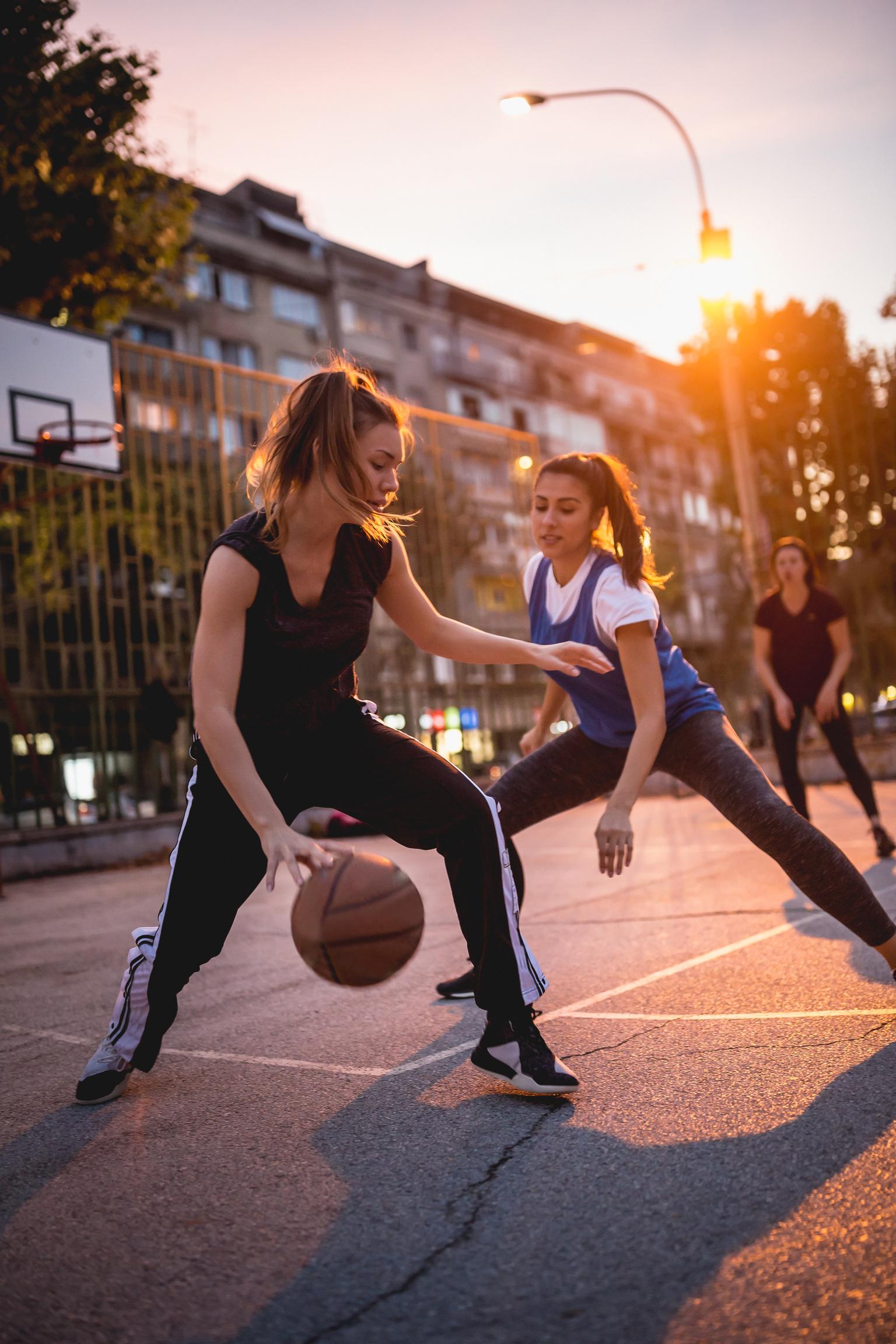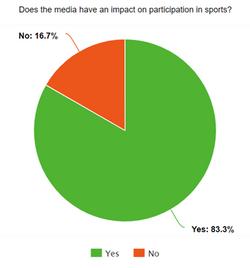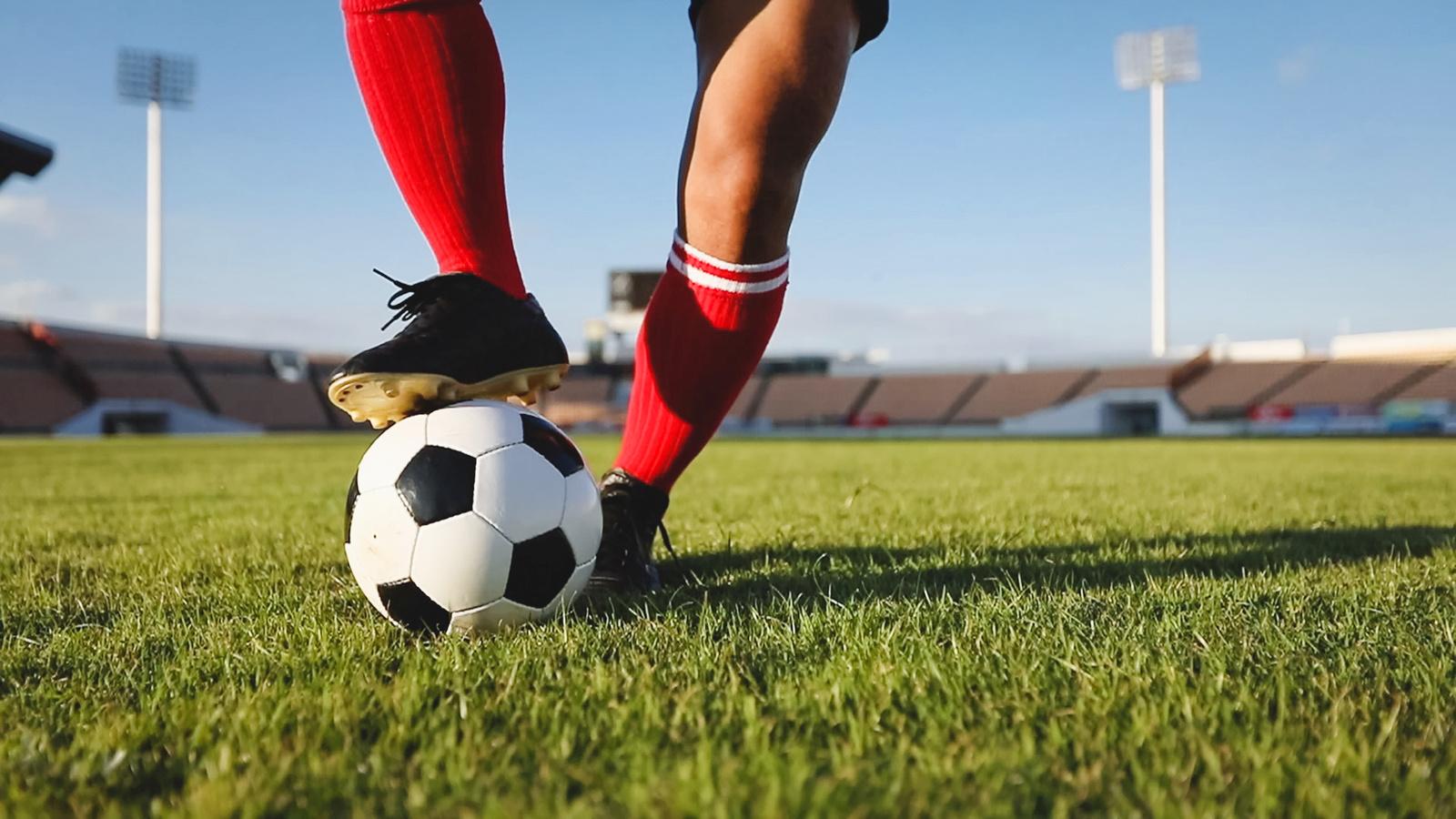
8 minute read
TO WHAT EXTENT HAS THE PERSPECTIVE OF WOMEN IN MALE DOMINATED SPORTS CHANGED OVER TIME?
WRITTEN BY ISABELLE S
Women in sport have been largely underrepresented compared to men in the past and it was frowned upon for women to take part in sports In recent years, women ’ s sport has improved dramatically and has been better represented than ever before. However, there is still a huge gender gap in sport, and many sports such as football and rugby are still seen as ‘male sports.’ In this essay I wanted to explore how big the gender gap still is in terms of participation, viewing figures and salaries, and how much women ’ s sport has changed over time. My sub questions are as follows; Is there a bias towards men in common sports? What influences the perception of women in sport? Has the perspective of women in sport changed since the win of the Lionesses? For this last sub-question, I will be using the case study of the Lionesses win of the women ’ s Euro cup My interest in this topic piqued after visiting the ‘Women’s Sport through the lens’ exhibition at the Saatchi gallery, where I found out some shocking facts about women in sport. I learned that women were told not to take part in the marathon until the 1970s as it was thought to damage their ovaries and that women ’ s football was banned until 1971 This made me want to research further into the topic, so I decided to complete my EPQ on women in sport.
Does the sports industry favour men over women?
The obvious answer is yes, there is a clear bias towards men in common sports which is shown in both the professional sports industry along with sports in schools This is most likely due to the fact that in the past, men ’ s sport has been seen as superior to women ’ s. Is this still the case? It is not easy to get rid of this bias instantly as it requires funding and many more factors for male dominated sports to become equal for both men and women The bias is in decline, however there is still a huge gender gap in sports, especially sports that are male dominated such as football and rugby According to the National Federation of State High School Associations (2018 – 2019), boys get 1.13 million more sporting opportunities than girls annually, proving that this bias still exists This is further shown as “Only 44% of secondary schools currently offer equal access to football in PE lessons ” (Dan Roan – BBC 2022, “How can England's Euro 2022-win help grow the game?”) Access to sport for girls and women is rising however, there are still gaps between genders. As per the Women’s Sport Foundation, ‘40% of teen girls are not actively participating in sport’ and over half of all women in the UK do not exercise at all (bbc co uk) These statistics would suggest that the bias against women in sport is changing, but at a slower level than perhaps is hoped
Why has equal pay been difficult to achieve?

Women in sport are paid less than men due to multiple factors including lack of investment and also due to the overhanging bias towards men in sports This is often an issue when it comes to prizemoney “According to a BBC sport survey, up to 83% of sports now offer the same amount of prize money for men and women But in the 17% that don’t, the difference runs into the millions ” (Gender inequality in sports - 2021, “All about gender inequality in sports”) In the 2022 Euros, the Lionesses took home 1 55 million Euros as prize money for winning the competition (Ali Condon – Tyla “People are shocked after ”) However, this is only a fraction of the 34 million Euros Italy won in the men ’ s Euros the previous year (Karthik Nair – Republic World com 2021, “Euro 2020: Here’s How Much ”) This is also shown in the Forbes ‘top 50 most paid athletes’, where only two were women (Naomi Oscar coming 19th earning 59 2 million dollars and Serena Williams coming 31st earning 45.3 million dollars (in total)). This clearly shows that sportswomen do not get paid equally to men and that there is still a bias towards men in sport Part of the reason this bias still exists is due to lack of investment for women ’ s sports This lack of investment has led to less sponsorship for women which meant that there were less role models as the wages for these sports women were too little to be a full-time job. Due to this, the players had less training time as they all had other jobs which restricted players from becoming professional meaning that fewer people wanted to watch women ’ s games leading to fewer full stadiums Due to the fact that sportspeople’s salaries are reliant on viewing figures, women were therefore not getting paid equally to men This cycle meant that women ’ s sport was seen as inferior compared to men ’ s sport and men ’ s sport was seen as more popular and entertaining. However, this chain is now being broken allowing more women to become professionals, helping to improve women ’ s sport in general An example of a sport taking large steps to equality is cricket The Hundred will now “offer equal prize money in the men ’ s and women ’ s tournaments” which will create role models in cricket and increase participation in girls’ cricket (BBC Sport 2021 “Prize Money”).
How does the media play a part in the perception of women in sport?
The media plays a huge part in influencing the perception of women in sport and can allow sportswomen to become role models, increasing participation in girls’ sports However, the Tucker Centre for Research on Girls & Women in sport found that “Forty percent of all sports participants are female, yet women ’ s sports receive only 4% of all sport media coverage ” , suggesting that no matter how many more women/girl role models there are, unless the media is showing them online, girls’ participation in sport may not increase. Additionally, harmful gender stereotypes cause sportswomen to be shown in the media as sexual objects and often their appearance receives more attention than their abilities or the sport itself In a survey I conducted, 100% of respondents said that they thought women are underrepresented in sport compared to men and that more male role models are shown in the media than female A further 83.3% said that the media has an impact on participation in sport, suggesting that the lack of women ’ s sport being shown in media is not helping the movement of increasing girls’ participation in sports However, in the future, this should start to change and women and girls in sport are definitely getting more media coverage than before The equality motion is also a driving force of equality in sport by forcing change. For sports brands in particular, equality has become a ‘must have’ which will help create more role models for girls and will overall improve the perspective of women in sport
Is the media creating more role models for girls, and if so, how will this improve the perception of women in sport?

Role models are essentially created by the media through a cycle of sponsorships, leading to more money which can be used for investment in women ’ s sports creating a positive impact on the women ’ s games This means that the media is a critical part in order to improve sports for women and girls Recently, at the BBC Sports Personality event, Beth Mead won the award for Sports Personality of the Year after being the top goal scorer in the 2022 Euros and helping the Lionesses win the competition. ‘Most of all, this is for women ’ s sport’ ’heading in the right direction,’ Mead stated after being awarded the trophy The Team of the Year was also awarded to the Lionesses, proving that the perspective of women in sport is massively improving The England Lionesses have all become iconic role models for girls as well as other famous sportswomen such as
Serena Williams, Alex Scott and many more Serena Williams is perhaps the most successful sportswoman of all time, winning 23 Grand Slams and appearing in the grand slams final 33 times (tennis-x, Serena Williams’s Grand Slam Titles, Finals, Records) These women have completely changed women ’ s sport and inspired girls to play sports, increasing the participation of girls in sports
Has the perspective of women in sport changed since the win of the Lionesses?
The Women’s Euros took place in July 2022 and had a huge positive impact on women ’ s and girl’s football The tournament saw the highest viewing figures for women ’ s football than ever before with over 17 million people tuning in to watch England and Germany in the final. In 2009, the cumulative viewing figures for the women ’ s Euros reached 48 million increasing to 116 million in 2013 and 165 million in 2017 (Statista - 2017, Cumulative audience of women ' s EURO football matches in Europe) In 2022 however, the figures reached “ more than 365 million”, over double that of the previous tournament (SportsBusiness 2022, UEFA Women’s Euro 2022 ) These statistics prove that there is now a larger audience for women ’ s games and girl’s football has seen a huge amount of attention as a result of the women ’ s Euros.
What has the women ’ s euros achieved?
The significant amount of attention girl’s football received in the media has definitely had a positive impact on the game and “football is now the top participation sport for women and girls in England” (The FA –2022 “About Women’s’ and Girls’ Football in England”) The FA have made targets to ensure football is an equal sport and has made a campaign to support its “strategic ambition to give all girls equal access to play football in school by 2024 ” (The FA, Let Girls Play Campaign 2021) According to BBC Sport (Dan Roan – BBC 2022, “How can England's Euro 2022-win help grow the game?”), “The FA hopes the Euros can create half a million extra opportunities for women and girls to play the game ” . The Euros have represented the progress made in the women ’ s game and shows that football is on course to becoming equal in the future and this has already started to make progress The Government have recently pledged over £600 million in the next two years to improve PE in primary schools and allow for sport in schools to be more accessible for both girls and boys (Suzanne Wrack –The Guardian 2023, “Government pledges equal access to school PE sports for boys and girls”). The platform created from the Euros will also play a part in the Women’s

World Cup 2023 and the momentum of the Lionesses will be a catalyst for the future success of women in all sports
In conclusion, the perspective of women in male dominated sports has positively changed over time and has seen huge improvement which has been shown in women ’ s sport events and in the media Through my research, I was able to determine that the bias towards men in certain sports still remains and there is still a considerable gap when it comes to men ’ s and women ’ s pay in sports However, for most sports this gap is shrinking and over time, men and women will become much more equal in sport. I also learnt about the huge impact that the media has on the perspective of women in sports and by showing women in the media, this will lead to more role models being created, ultimately leading to more participation in girls’ sports Finally, I decided to focus the 2022 Women’s Euro Cup The women ’ s euros definitely had a positive effect on girls’ sports with viewing figures for women ’ s football higher than ever before. In the survey I conducted, 100% of respondents said that the perception of women in sport had positively changed since the win of the Lionesses There is still further to come for women ’ s sport, but it is clear that sport for women and girls is moving in the right direction, and I hope that in the future, sport will be equal for both men and women











